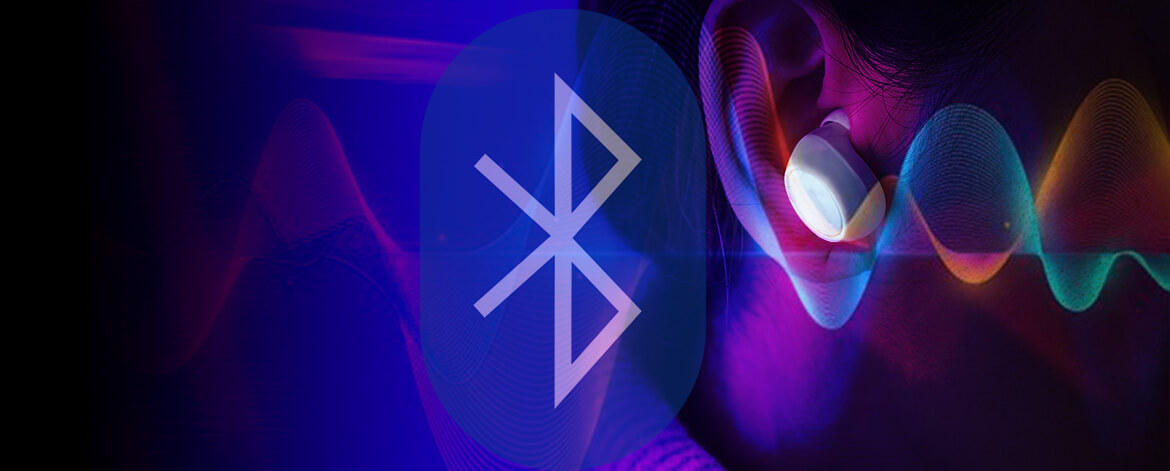Bluetooth is a key wireless technology penetrated most industries with various applications. The Bluetooth Special Interest Groups (SIG) community always enables innovative features including various mesh networks, the extended advertisement with 512 bytes, long-range ~1km using coded PHY, location services(indoor positioning services), isochronous channels and LE audio(Bluetooth 5.2 specification). Every Bluetooth latest version comes with such new tremendous features that offer multiple applications including overcoming limitations with older Bluetooth versions.
Introduction of LE Audio – The Latest Bluetooth Technology
- Bluetooth audio has captured the largest solution segment in the market and most of the earbuds and headphones work on existing Bluetooth classic technologies. However, LE audio will be a game-changer with the next generation of Bluetooth audio technology. LE audio is streaming over Bluetooth low energy radio and offers high audio quality with reduced power consumption compared to older Bluetooth classic options using new codec support. The LE audio has new attractive features like multi-audio streams, broadcast audio streams to overcome the limitations of the older versions and enhance the capabilities of Bluetooth audio use cases.
Let’s Explore the New Features of LE Audio
- LC3 Codec Audio: Usually, an audio codec is used to compress an audio stream at the sender and decompress it at the receiver side to playback the audio. LE Audio is coming with a new codec, the “Low Complexity Communications Codec” (LC3), which enables high quality and low power features. The LC3 provides better quality at lower data rates and offers flexibility to choose the product requirement tradeoffs between audio quality and power consumption. It also provides the same quality of audio with around 50% lower bit rates than the SBC codec.
- The current Bluetooth classic audio is working with the default SBC codec, which has high flexibility for sampling rates up to 48khz and 16-bit depth and can transmit the data up to 345kbps. But its compressor algorithm loses the high data, where LC3 audio codec will support the various combinations of 8khz to 48khz sampling rate with a bit depth of 16, 24 and 32 bits per audio sample. The LC3 is a mandatory codec for LE audio devices and supports multiple audio channels which enables the users with high-quality audio, more robust audio and longer battery life or smaller form factory for products.
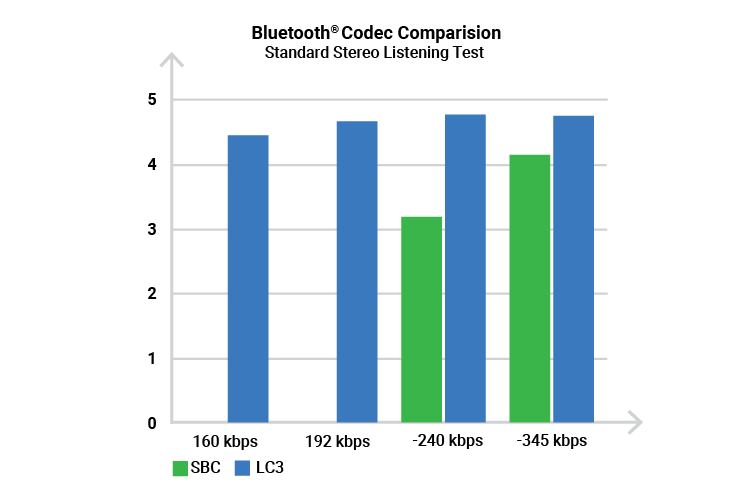
Low Energy Audio: The LE (Low Energy) audio is self-explanatory in its very name. Its audio feature supports the Bluetooth low energy radio where existing classic audio is working on Bluetooth classic radio. Obviously, it offers various opportunities to design low power audio applications. Here, most of the use cases will be wearable devices operating on battery power.
There is a trade-off between power consumption and audio data rates, where the LC3 codec helps to achieve the same audio quality with 50% fewer bit rates, which means LE radio does not need to stay active for longer, which helps in reducing power consumption. Hence, the product design can accommodate the same audio quality with a smaller form factor and small battery size.
- Multi-stream Audio: Multi-stream audio offers independent, synchronized multiple audio streams between a source device and one or multiple audio sink devices. For example, a smartphone as a source device and one or two or more earbuds as sink devices. LE audio feature utilizes the isochronous channels feature fully, which offers various applications like truly wireless earbuds. This feature allows for multiple audio streams between source and sink devices and these streams are tightly synchronized to ~10-15usec. This feature can offer smoother switching between different audio source devices and help to achieve functionalities of A2DP and HFP profiles of Bluetooth classic.
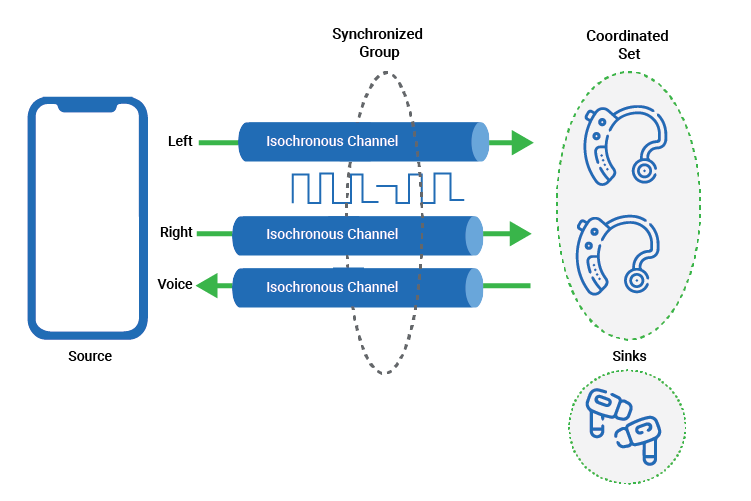
LE audio multi-streams can be achieved through Connected Isochronous Streams (CISes), which enables logical transport between connected devices to transfer data on either side of the ACL (asynchronous connection link). Each CIS can use fixed or variable data size and framed or unframed data on each CIS event with single or multiple data packets. CIS data traffic is unidirectional or bidirectional between the devices and it uses an acknowledgment protocol to improve the reliability of packet delivery in a CIS.
Both Bluetooth classic and LE audio work for earbuds:
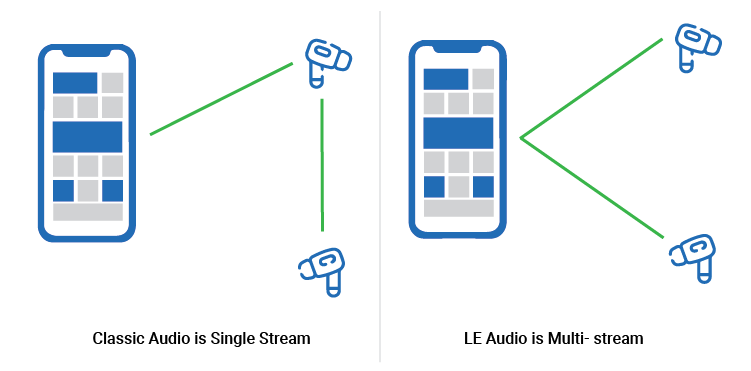
Broadcast Audio: An innovative feature that enhances the use case capabilities in the Bluetooth audio field. It allows one audio source device to broadcast audio streams to many (unlimited) audio sink devices.
The broadcast audio feature can be enabled using “Broadcast Isochronous Stream” (BIS). It is used to broadcast one or more isochronous data streams to all sink devices within range. It supports fixed or variable size with framed or unframed data on each BIS event with one or multiple data packets. It uses unidirectional data traffic from source to sink devices without acknowledgment. The BIS data packets can be retransmitted by increasing the number of sub-events in every BIS event to improve the reliability of delivery.
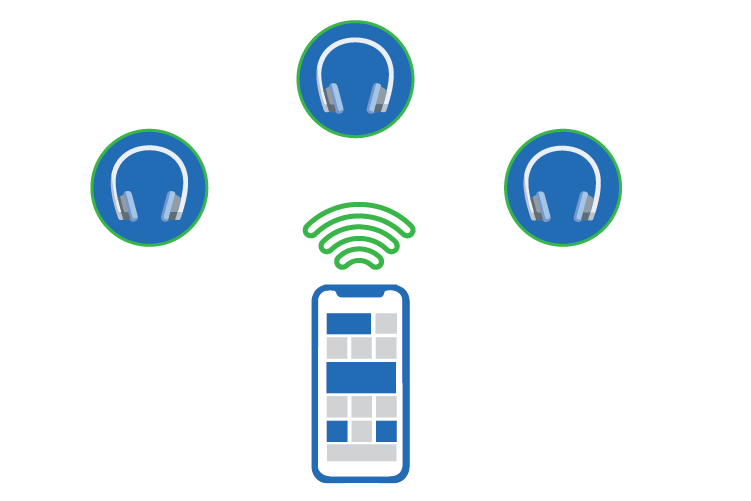
- Broadcast audio is allowing many in-range sink devices to join the ongoing audio streams using the below 2 types of broadcast methods that can be used for it:
Open broadcast: Any in-range sink device can start receiving the broadcast audio
Close broadcast: Any in-range sink device needs to enter a passkey to participate in any source device audio streams
- Mainly, audio sharing can be categorised for the following:

Personal Audio Sharing: Users could share personal mobile music with friends and family members
Location-based Audio Sharing: Particular location can have an audio source device to broadcast the audio stream around it for audio sink devices.

- For example, Airport authorities can set audio source devices with common announcements broadcasting audio streaming and many audio sink devices (passenger’s earbuds) within the range could receive the same audio stream simultaneously.
Bluetooth LE Audio Use Cases in Different Industries
LE audio will change the experience in the Bluetooth audio domain with different capabilities and enhance the various Bluetooth audio applications. Let’s discuss a few of the industry-specific applications:
- Hearing Aid: Bluetooth audio has brought significant larger & bigger consumers towards their audio products. The requirements for single or double hearing aids with telephony, low power consumption and low latency on the devices have increased rapidly. Hearing aids with LE audio offers multi-streams of audio traffic in & out from the phone with separate control for each audio stream. Overall, LE audio enables users with “wireless calling, wireless music, wireless watching, and wireless speaking”.
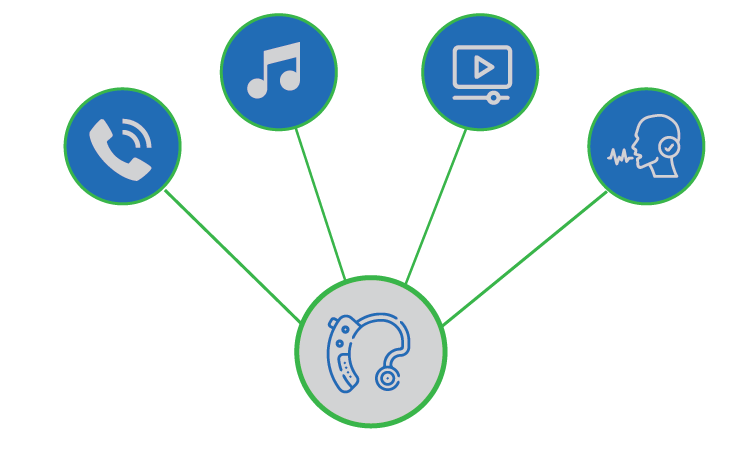
Consumer Electronics:
- Audio Source Device (Telephony/Media Audio): LE audio source device could send the audio data stream to one or more sink devices as it supports multi-stream features.
Mobile phones, tablets, laptops, TV, projector, setup box, streaming media player, etc. are a few examples of LE audio source devices - Audio Sink Device (Telephony/Media Audio): Audio sink will receive the audio data from one or different source devices. Here, multi-link features allow having multi-stream traffic based on user needs.
Earbuds, Headphones and Speakers are a few examples of LE audio sink devices.
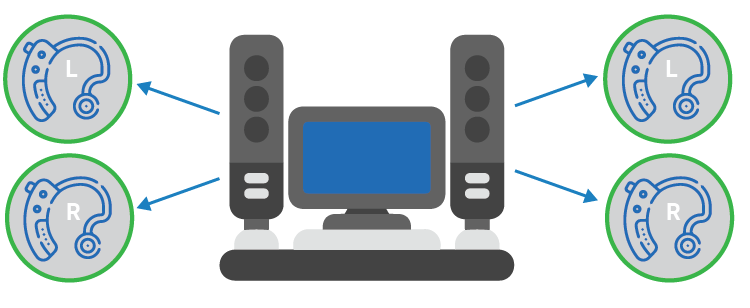
Automotive Industry:
- Audio Source/Sink Device (Telephony/Media Audio): The automotive industry is moving towards Electric vehicles (EV). The current infotainment system uses Bluetooth classic for music & telephony profiles whereas the LE audio in infotainment offers more features like audio sharing for music streaming and telephony with optimized power consumption use cases
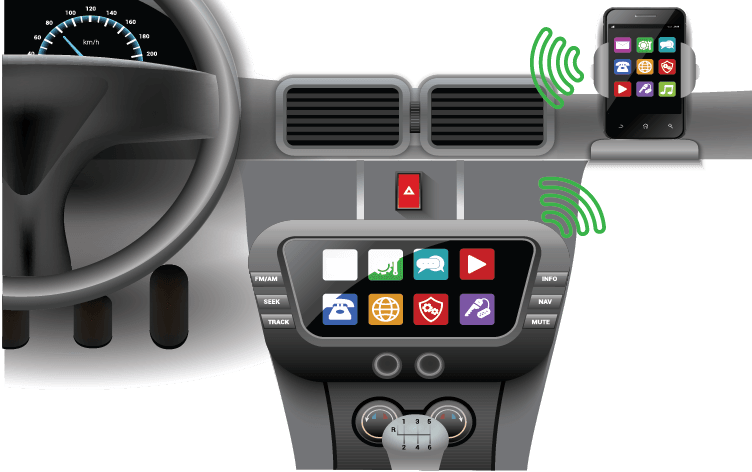
- Location-based Audio: As we see that broadcast audio is a really good feature in LE audio and enables many different applications for a larger audience. Let’s understand the location-based audio with some examples:
- Public Television: Public televisions at the library, waiting room, gym, airport, railway station, restaurants, religious places, and many more require public announcement or instructions audio transmission where the LE broadcast audio with multiple streaming will help in achieving the requirement
- Multi-language Support:
- Seminar/conference needs different language interpretations for various regions participants, where LE audio broadcast multi-streaming would be serving various language translations to different participants
- Cinema needs multi-language support for various native languages audio broadcast and users can sync their earbuds/headphones & hearing aid for choice of language audio stream.
About VOLANSYS
With vast experience in Bluetooth technology, VOLANSYS helps OEMs and Enterprises in developing smart and connected Bluetooth enabled solutions. Our experts have in-depth knowledge and experience in various emerging features of wireless technology including BLE mesh, extended advertisement, long-range and various low power applications.
If you are looking for a technology partner who has experience in various wireless technologies, then feel free to connect with us.

About the Author: Ashish Patel
Ashish Patel is working with VOLANSYS as a Technical Leader and has more than 10 years of experience working with Semiconductor and Embedded Product companies. He focused on expertise in Architecting, Designing, and developing for IoT & Wireless technologies solutions with command in debugging, embedded C programming on bare metal and RTOS and Linux integration for various SoCs. He created competency on Bluetooth classic and low energy technology protocol & applications on various platforms & SoCs.







